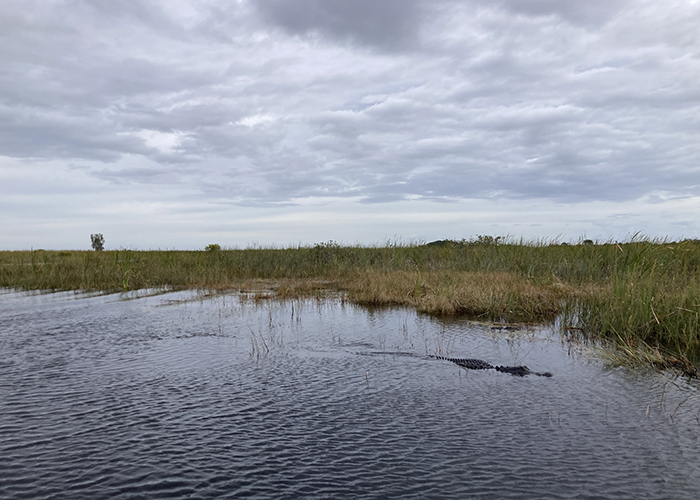 Previous Day |
Homestead, FL → Miami, FL 75.7 mi (121.8 km) |
 More 2023 Adventures |
Chehuntamo, everyone!
I’ve got an extra day in south Florida, so I’ve headed west down the Tamiami Trail Highway to experience one of the most popular outings in the Everglades, airboating! Yesterday, my guide, George, suggested that I check out Buffalo Tiger Airboats, run by members of the Miccosukee Tribe, which would surely add special layers to the one-hour tour!
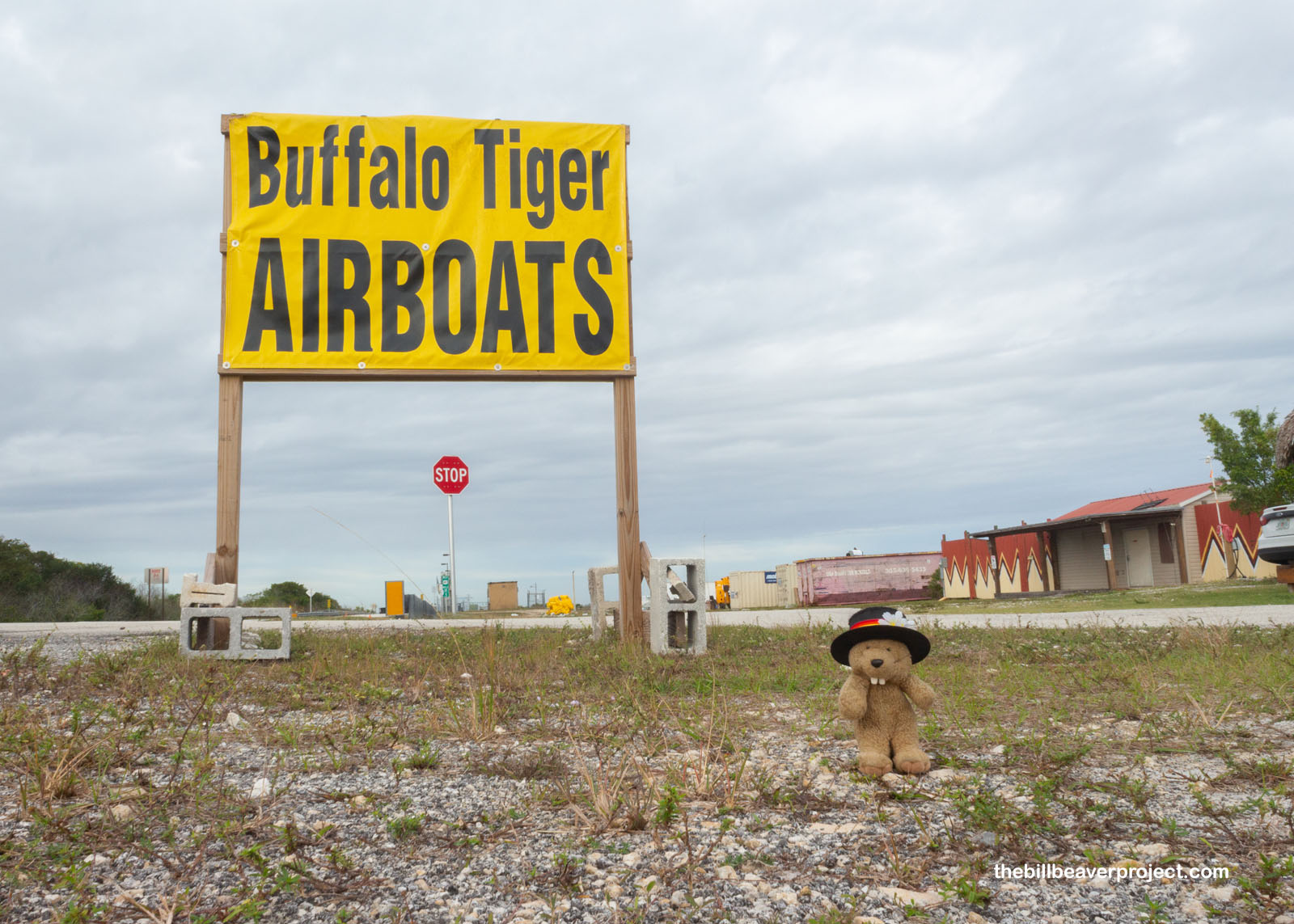 |
The Miccosukee, like the Seminole, branched off from Creek refugees who fled British colonists in the north during the 1700s! They escaped removal to Oklahoma in the 1800s by taking refuge in the water-logged sloughs of the Everglades where the U.S. Cavalry had no interest pursuing them! Ultimately, though, it was developers, not the military, that threatened them most, with the arrival of the Tamiami Trail Highway in 1928! The federal government wouldn’t recognize the tribe at first, so Miccosukee leader, William “Buffalo” Tiger, went to Cuba in 1959 and convinced Fidel Castro to give them international recognition as a sovereign nation. Not to be outdone by Castro, the US government followed suit and recognized the Miccosukee Tribe on January 11, 1962!
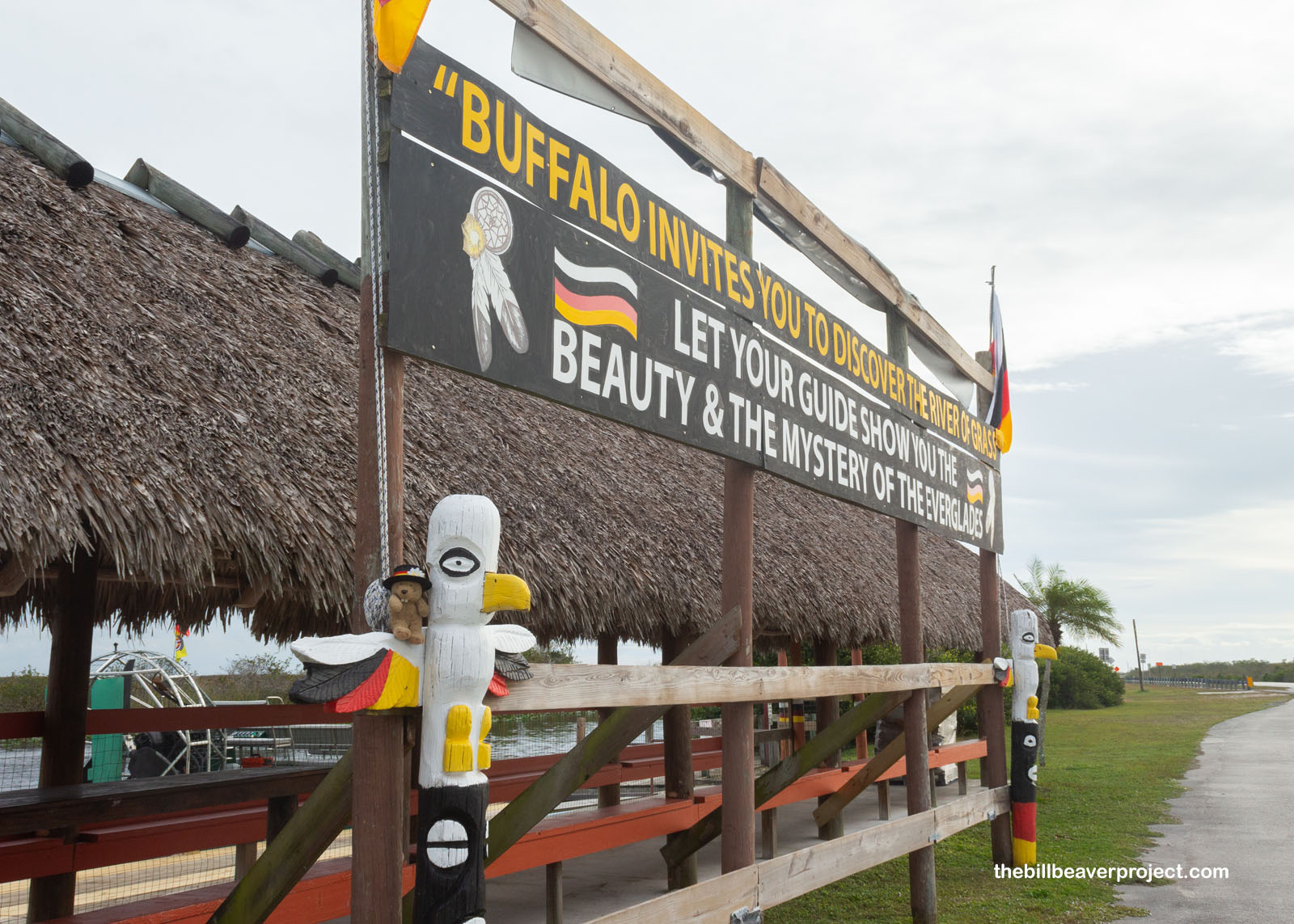 |
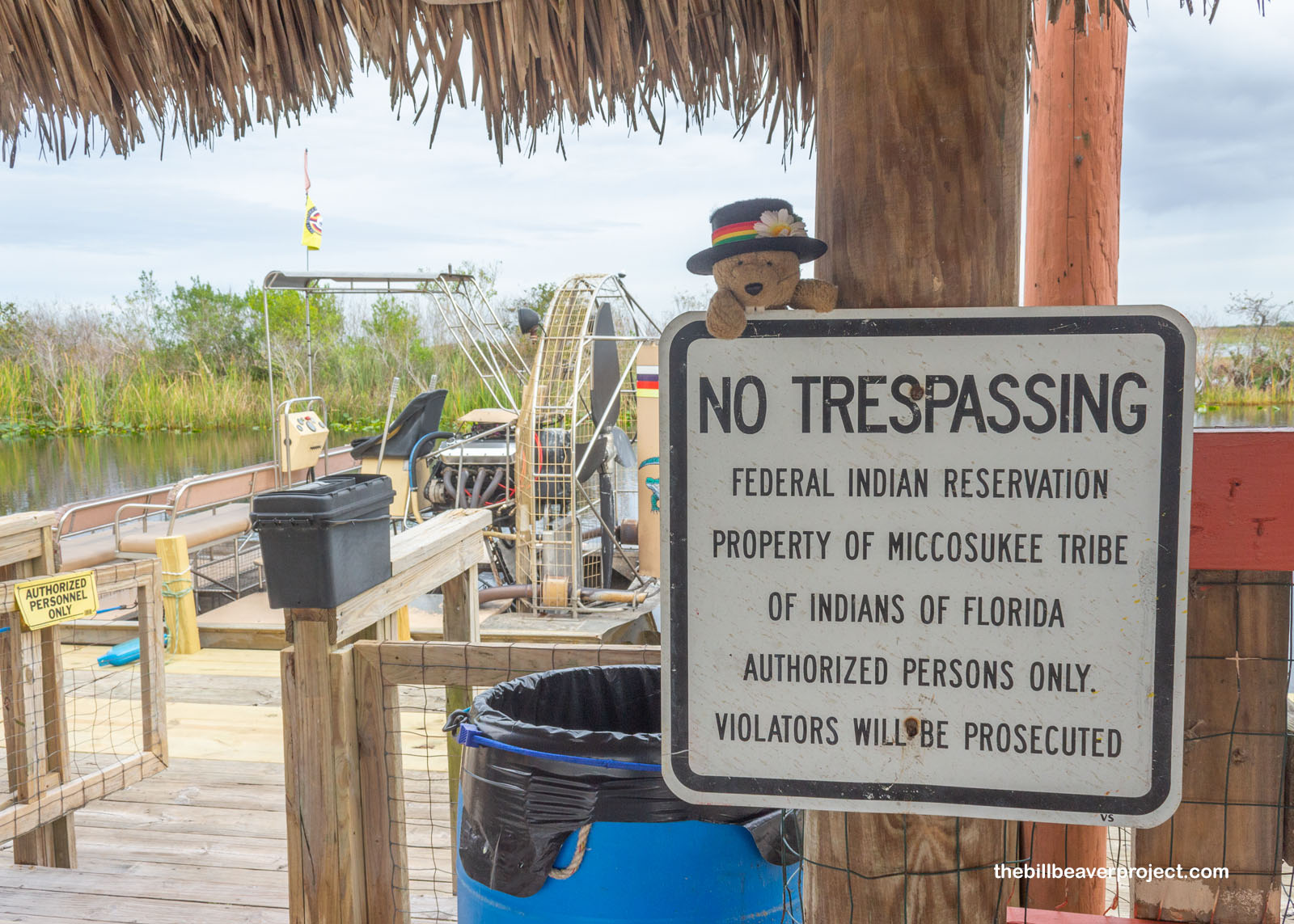 |
It was a small group setting out first thing this morning, just me and a family of French tourists. We all got headphones to protect our ears against the enormous noise of the boat’s fan and set off into Shark Slough, also called the River of Grass! Right away, I could see how useful these airboats were for getting around, and why a bunch of different Floridians had invented their own versions! Without submerged motors, we whizzed over sawgrass and lily pads without getting tangled or chopping up any aquatic critters. And there were plenty! Our guide called over a bunch of gators he recognized, like one he called Betty Lou after his aunt! After ten years of running tours, he knew a bunch of them by sight and explained how to read their body language. For instance, if their tail is floating at the surface of the water, they’re relaxed and at ease!
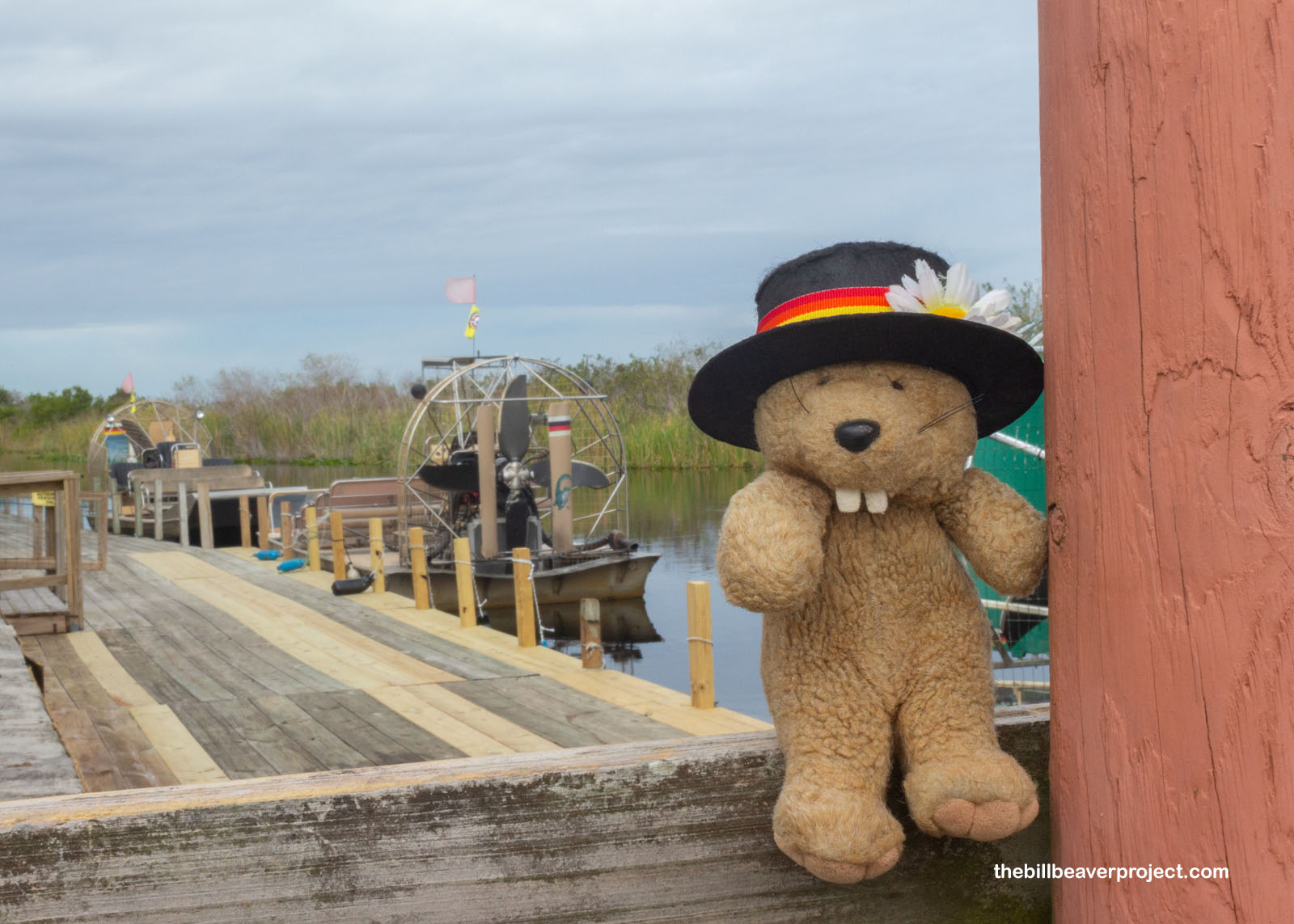 |
We flowed for about twenty minutes, stopping to greet a couple adult alligators and search an area where baby alligators had been spotted (we didn’t see any), then made our way to a tree island to learn a little more about the traditional Miccosukee way of life!
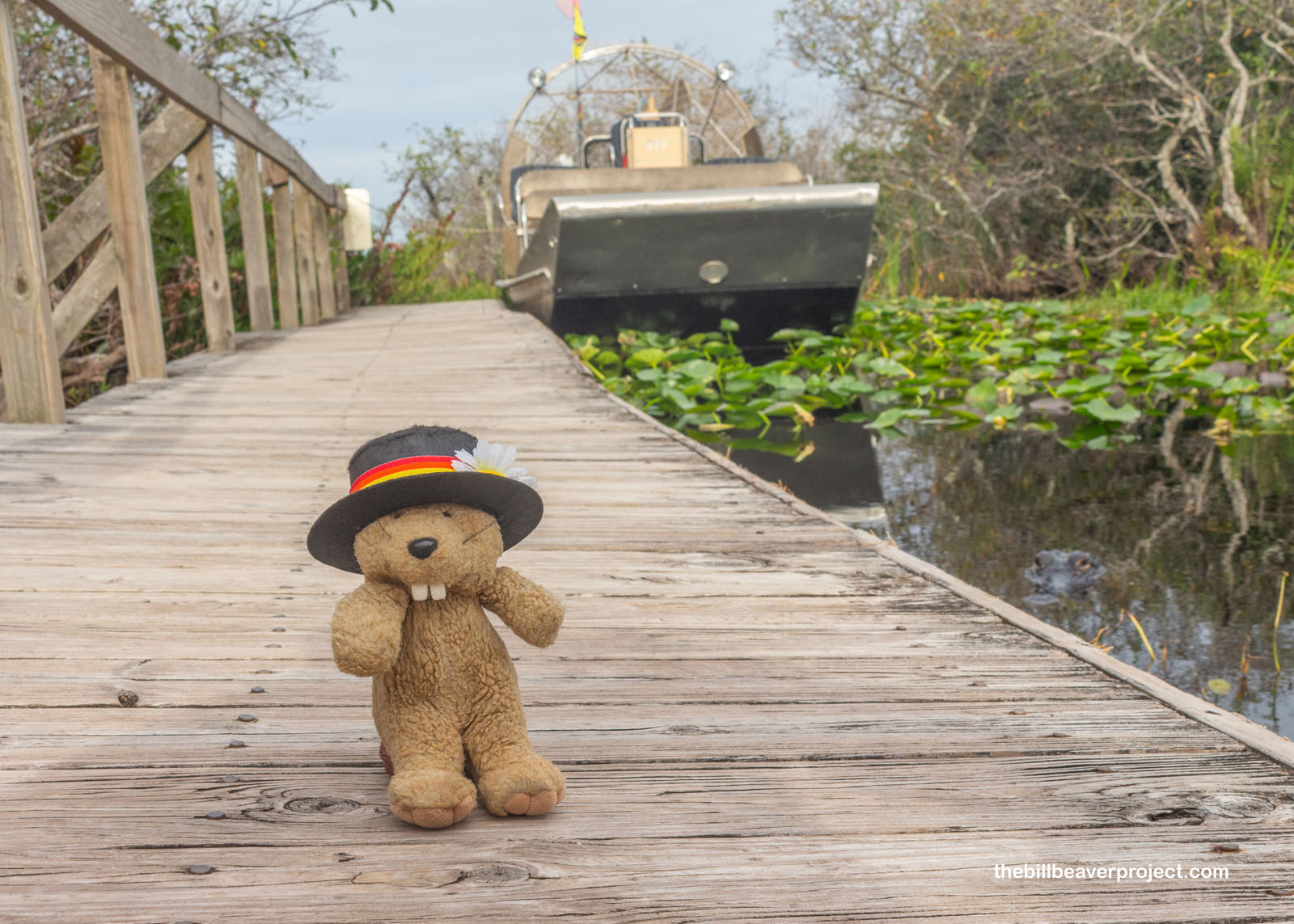 |
Tree islands are built from peat and water lilies! The gas from the water lilies and decomposing peat causes big chunks of that peat to float up and clump together at the surface. Attached to all the lilies, they grow and grow, becoming a place for trees and shrubs to take root and lock the island in place! This can take a while naturally, but Miccosukee folks found ways to speed up the process!
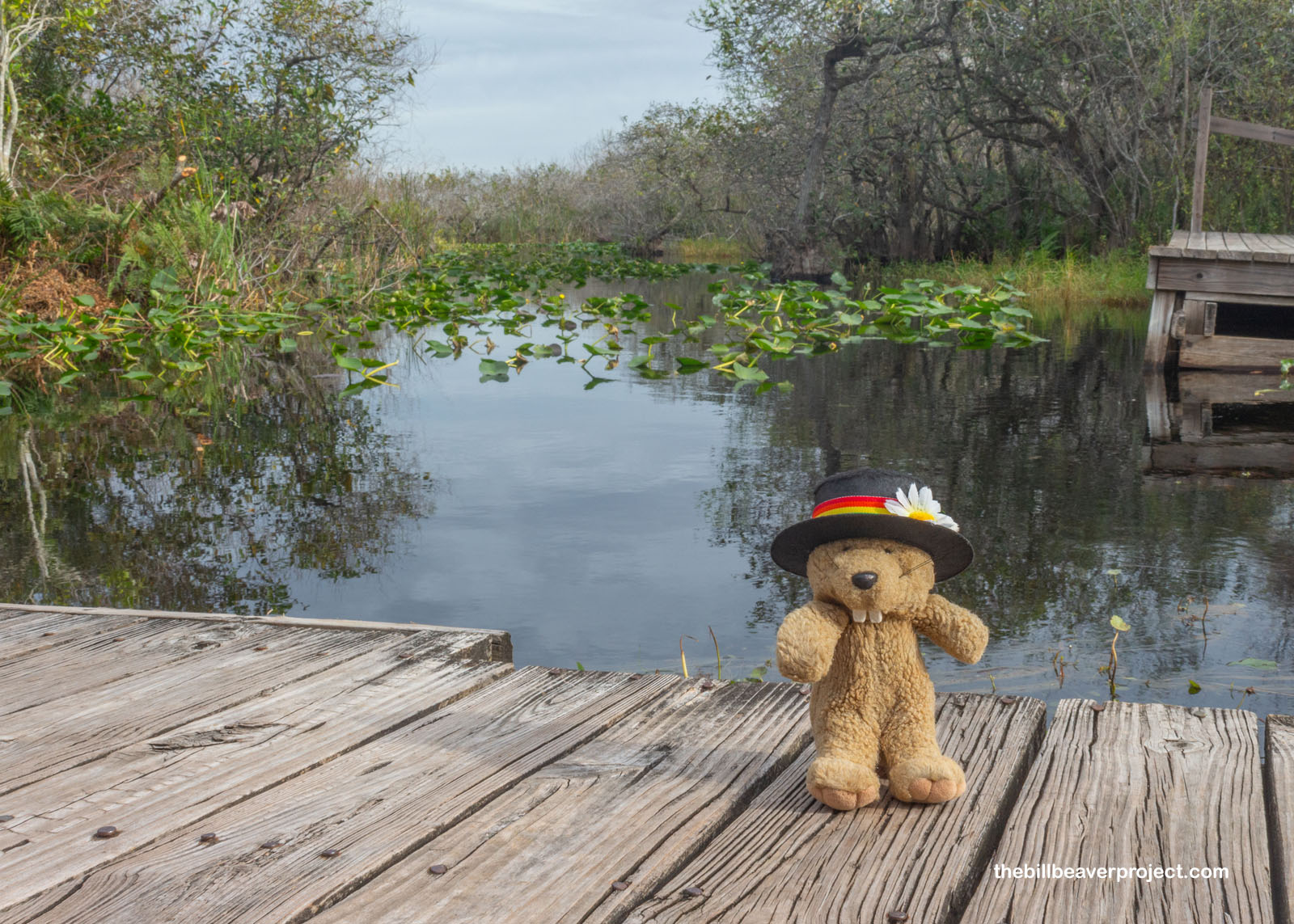 |
From there, the well moistened peat allows a whole ecosystem to grow up from the slough water! Trees like southern wax myrtle, sugar berries, and coco plums take root, creating homes for mosses, ferns, and air plants! From them, folks living in the slough have long harvested both food and building supplies!
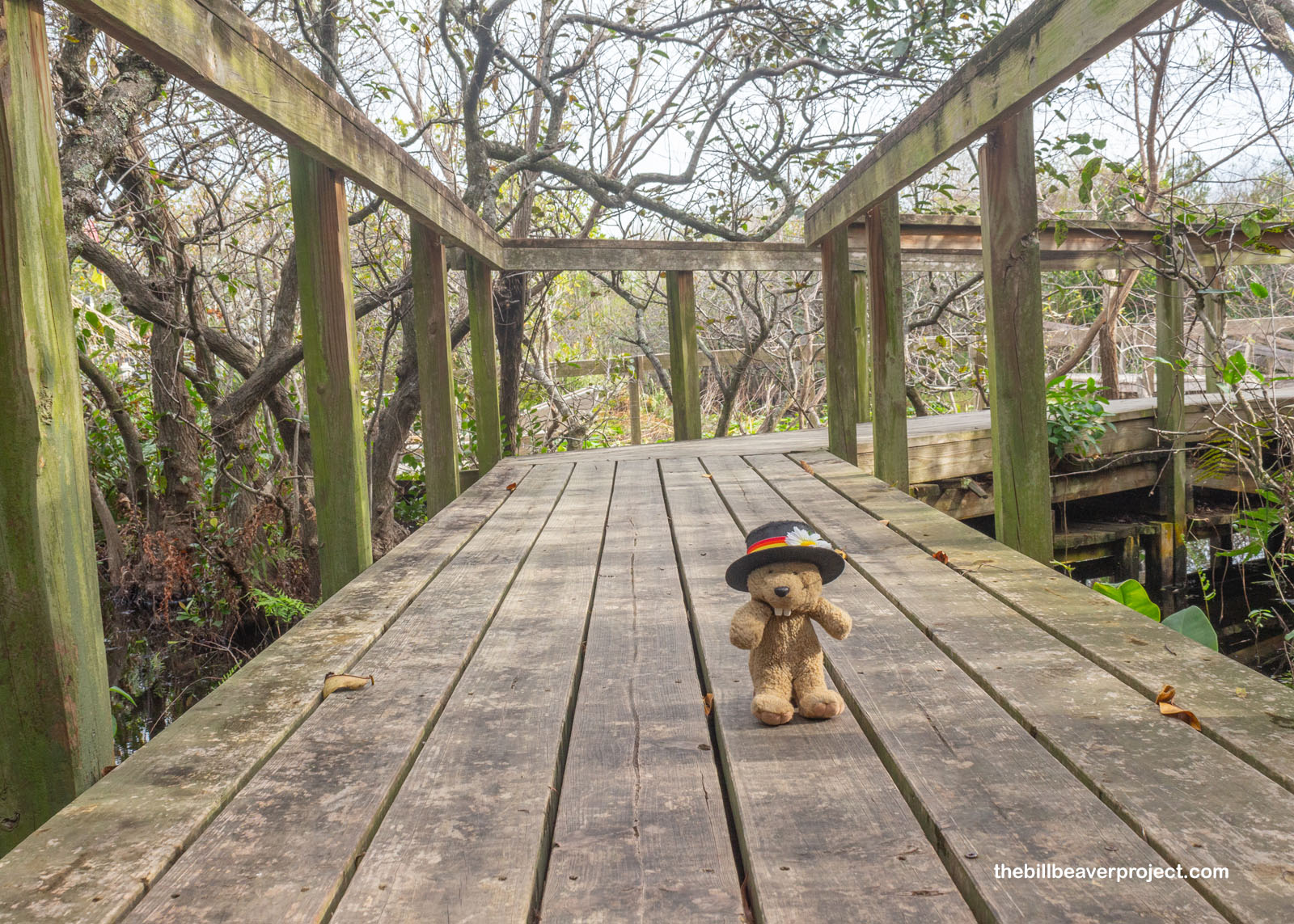 |
And sure enough, this tree island had those building materials on display with a pair of Chickee, also called stilt houses or platform dwellings! This type of shelter, supported by cypress logs and thatched with palmetto fronds, has been in use for centuries along the Gulf, so it made sense for the Miccosukee and Seminole folks, coming from the drier north, to adopt this style of housing in the mid 1800s! While this spot isn’t inhabited year-round, folks do come out here to camp and reconnect with their ancestral ways!
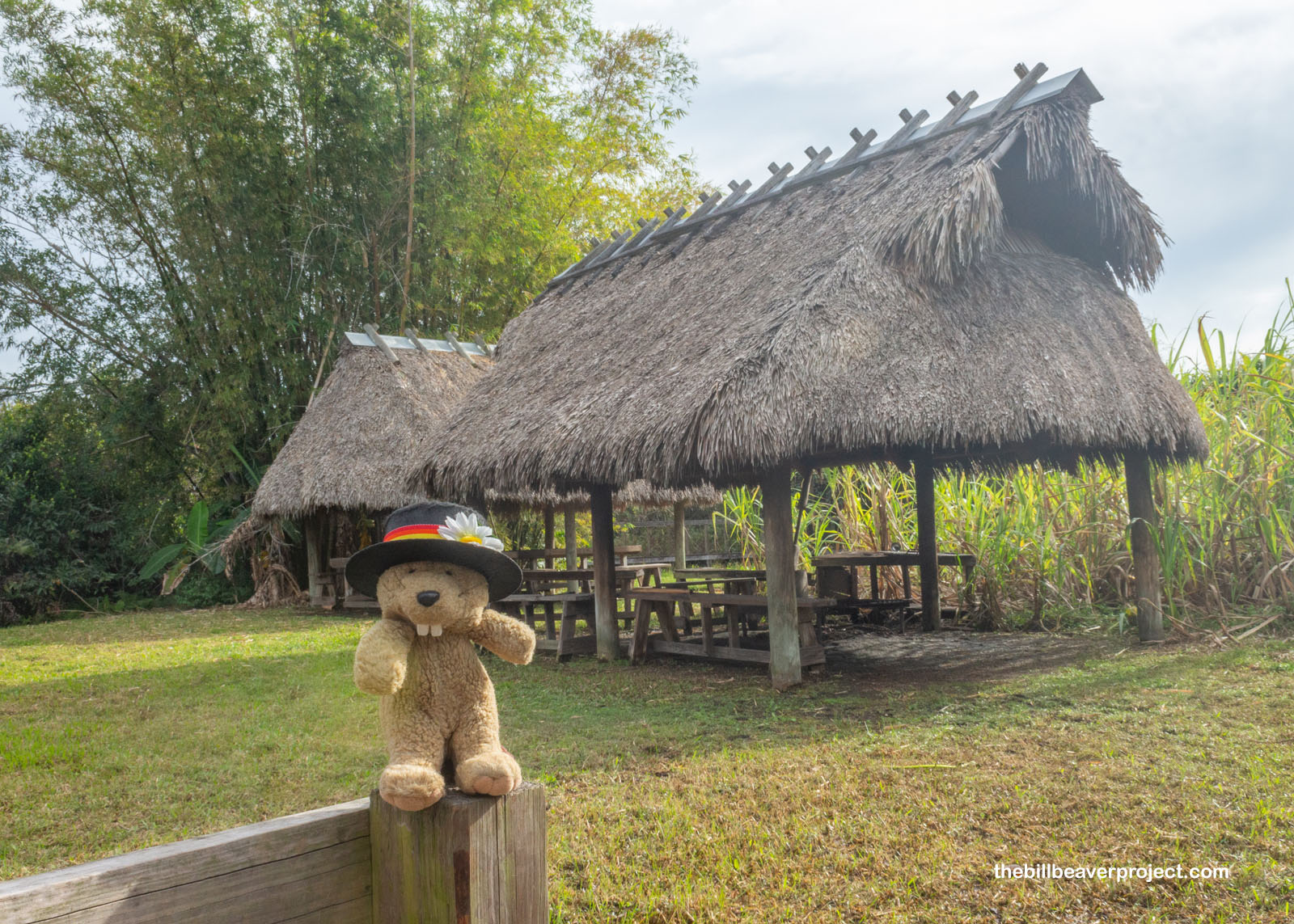 |
Our stay on the tree island was short, because the whole tour from start to finish was only an hour. As the group headed back down the dock, an alligator came swimming over, and the guide offered to introduce me to her! Midway through introductions, a puff of wind blew up and knocked my hat directly into her mouth! She snapped it shut and must not have liked the flavor at all, because she spat out the remains and took off! Oh no! My custom rainbow hat from Boopies Closet is no more!
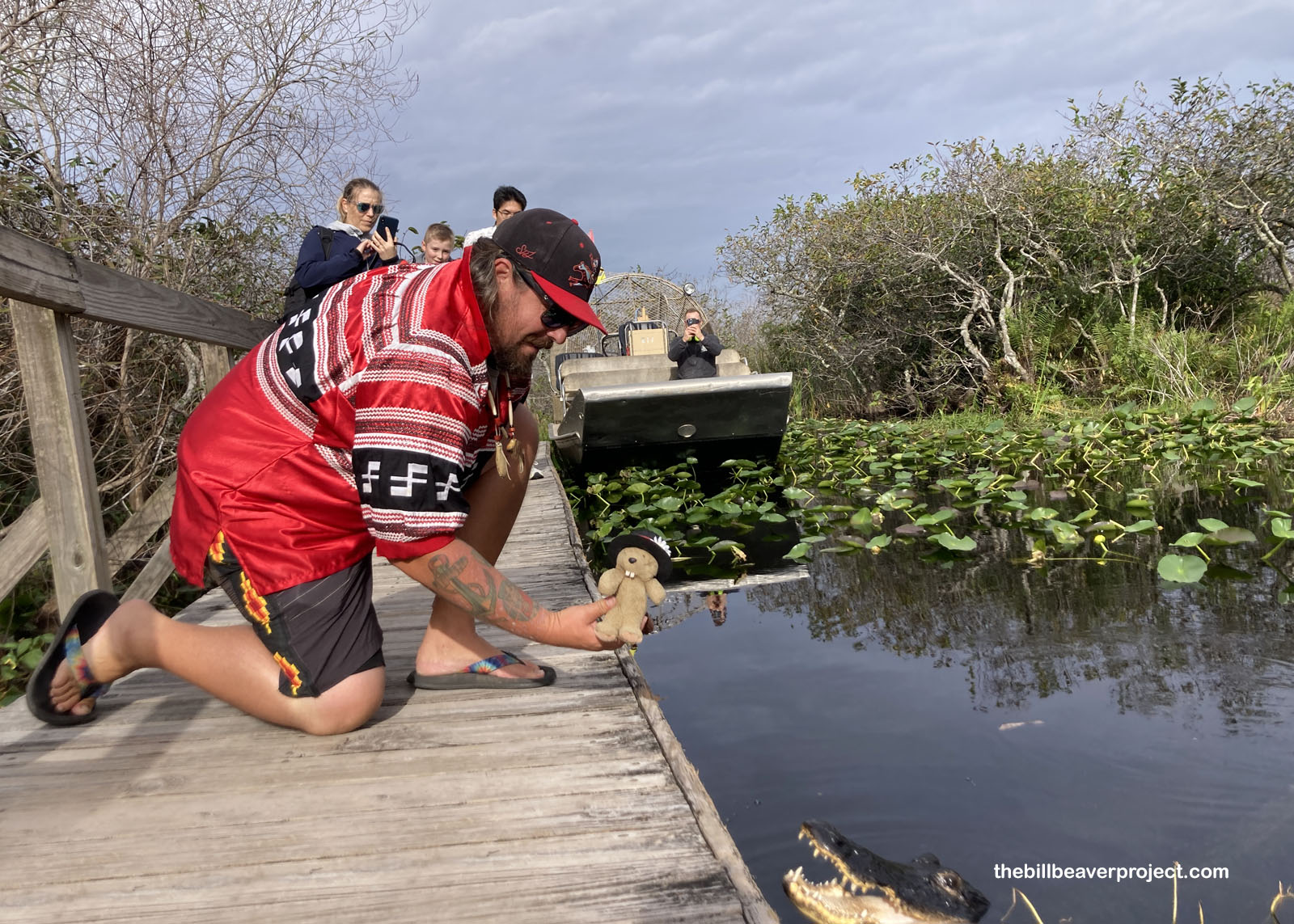 |
“Bill!” you might ask. “Why on Earth would you let someone hold you so close to an alligator?!” Well, the Miccosukee have handled alligators for centuries and still give demonstrations at the nearby Miccosukee Indian Village. Despite the tragic event in the River of Grass, I went to the village to learn more as soon as the airboat docked once again. Only, the folks at the counter wouldn’t look up from their phones at me when I asked about tickets. It was kind of rude, especially since I’d just lost my hat, so I moved on.
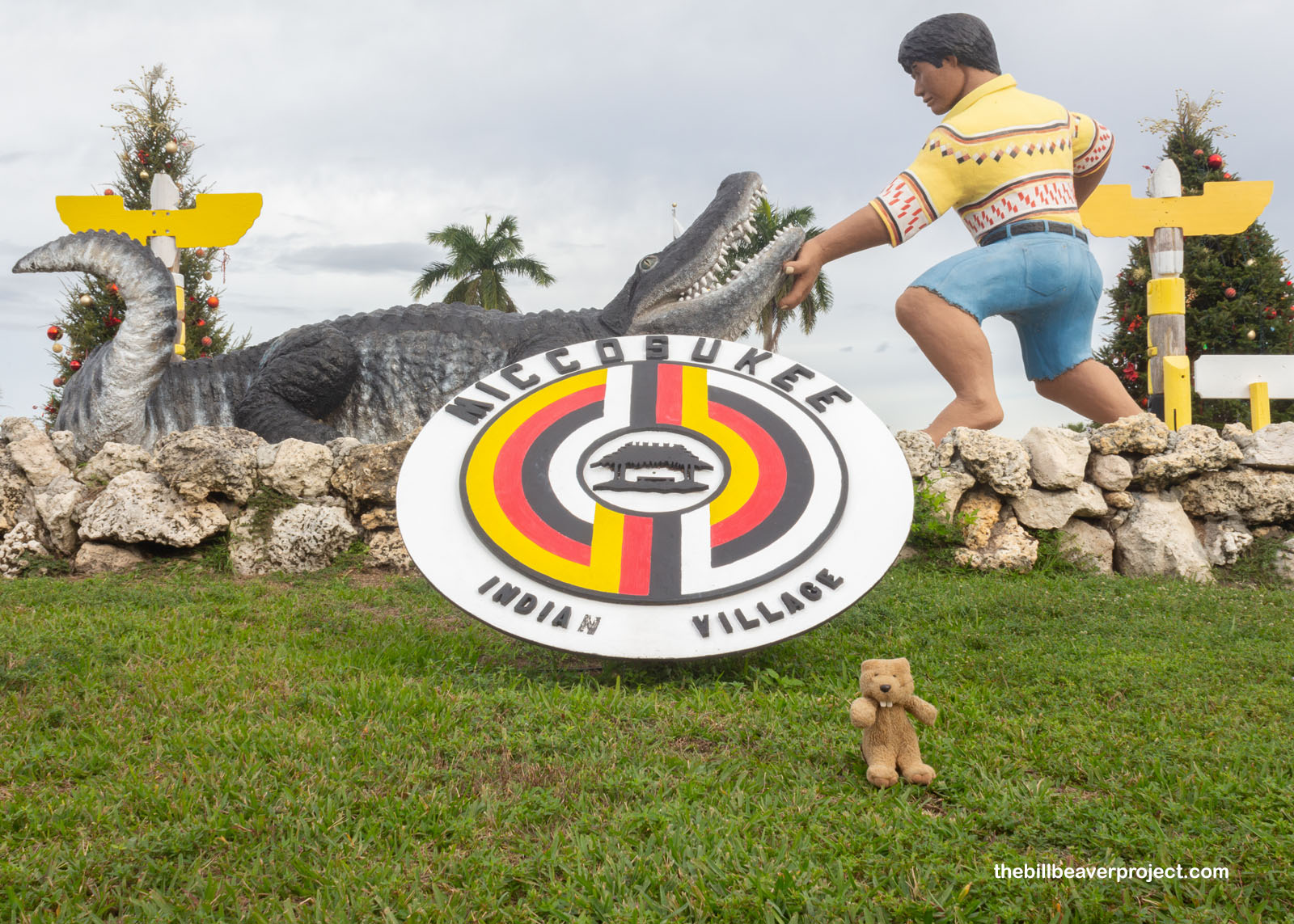 |
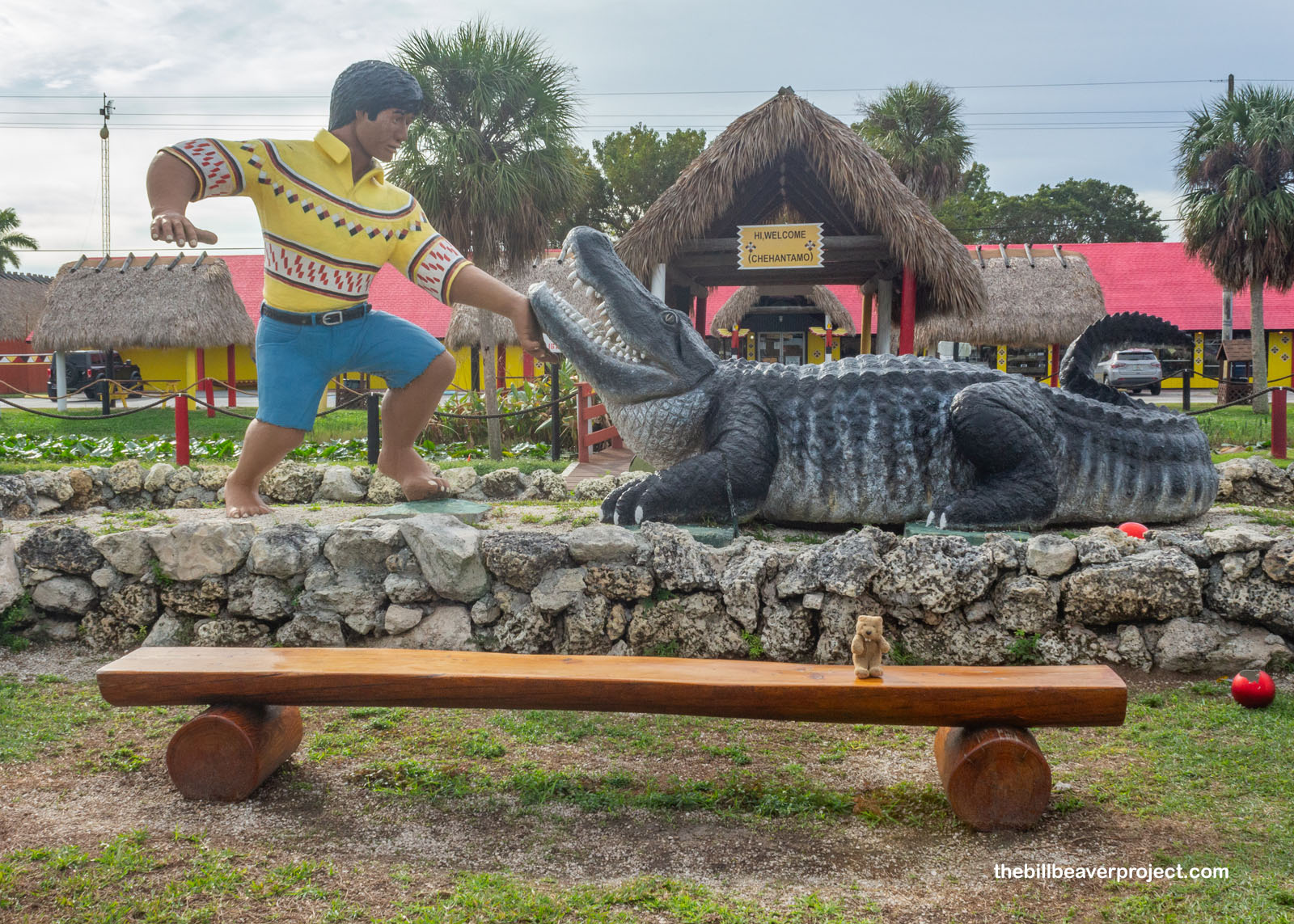 |
Once I was in Miami proper, I took a detour because my friend back home asked me to lay some stones on his great grandparents’ graves. They were Sam and Regina Joskowitz, and they came here from Poland just before the Immigration Act of 1924 would have stopped them from doing so! Their final resting place is here in Miami, while most of their descendants live far away in other states. The name of the place where they’re buried has changed names a couple of times over the years, so it was hard to track down. The whole world has changed around their grave markers, and one day, it might all be underwater. That sure gave me a lot to think about!
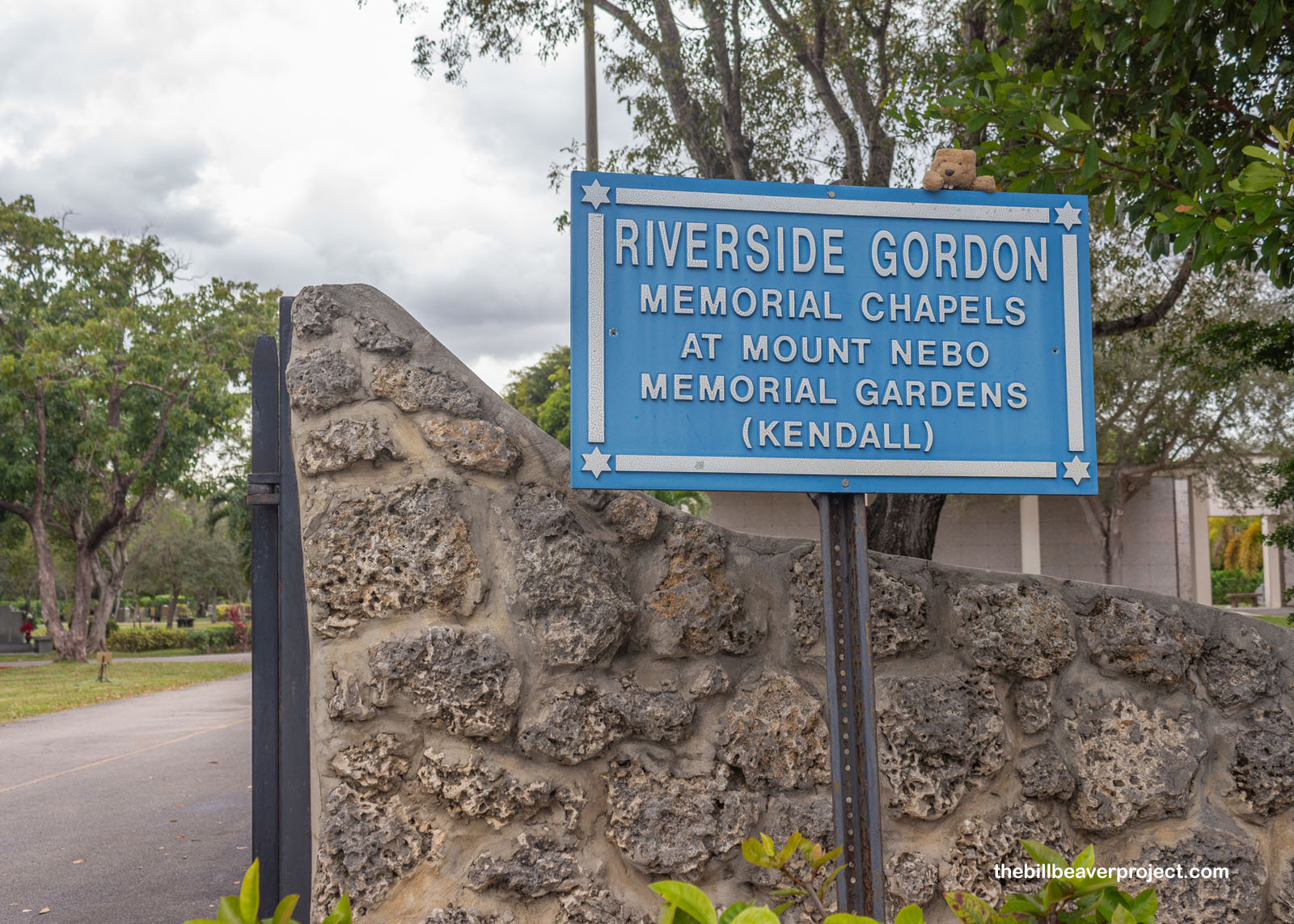 |
After tooling around the Coconut Grove area in search of historic sites before my flight, I stumbled upon a place with a very unusual name: The Kampong! This is one of five National Tropical Botanical Gardens and the only one that isn’t in Hawaiʻi. Keeping with a tradition I started this year in Hawaiʻi, visiting this Nationally Registered botanical garden seemed like the best way to round out my trip to Florida!
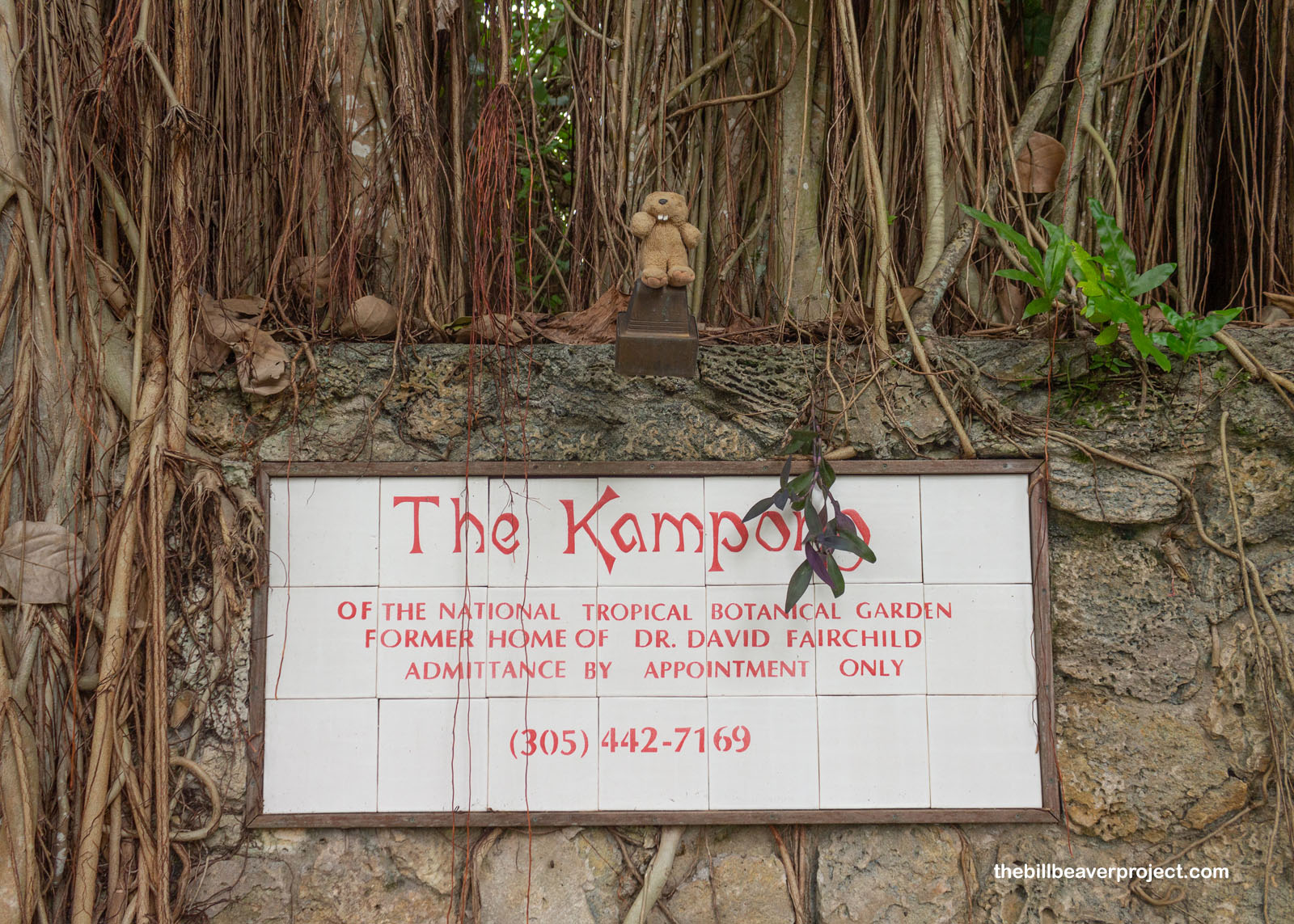 |
Before it was a botanical garden, this was the home of Dr. Eleanor Galt Simmons, Dade County’s first female physician! She was more into the cultivation of humans than plants, having graduated from the Women’s Medical College in Philadelphia in 1880 and moved here with her husband, Captain Albion, in 1892! They built their first house by hand, using the Encyclopedia Britannica as a guide! As a physician, Dr. Simmons had plenty to work with in south Florida, from typhus to measles to all sorts of mosquito-borne diseases! She treated folks of all races and backgrounds here at their home and also made her rounds either by boat or horse-drawn cart! Among her patients were the 7,500 soldiers stationed in Miami during the Spanish-American War!
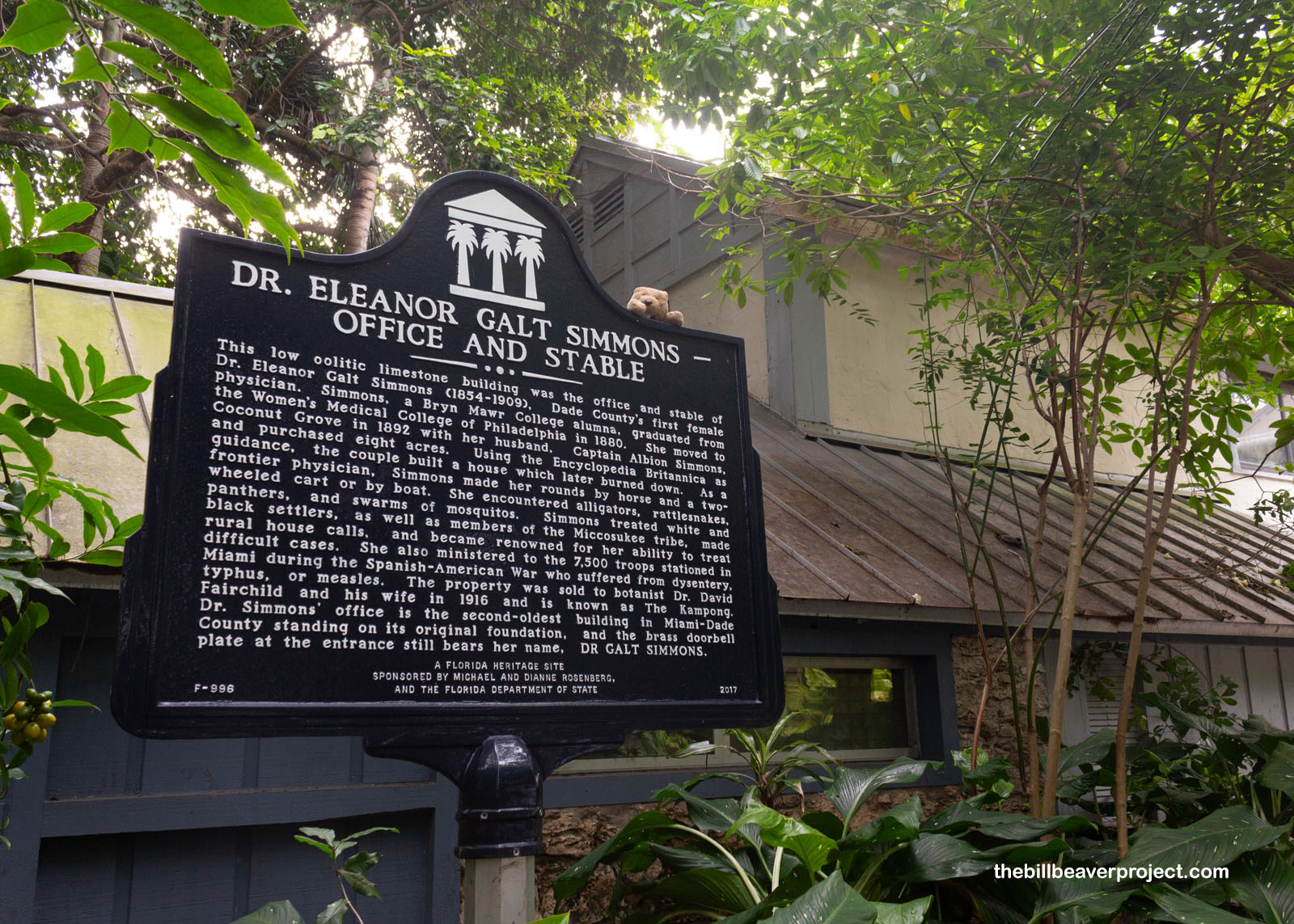 |
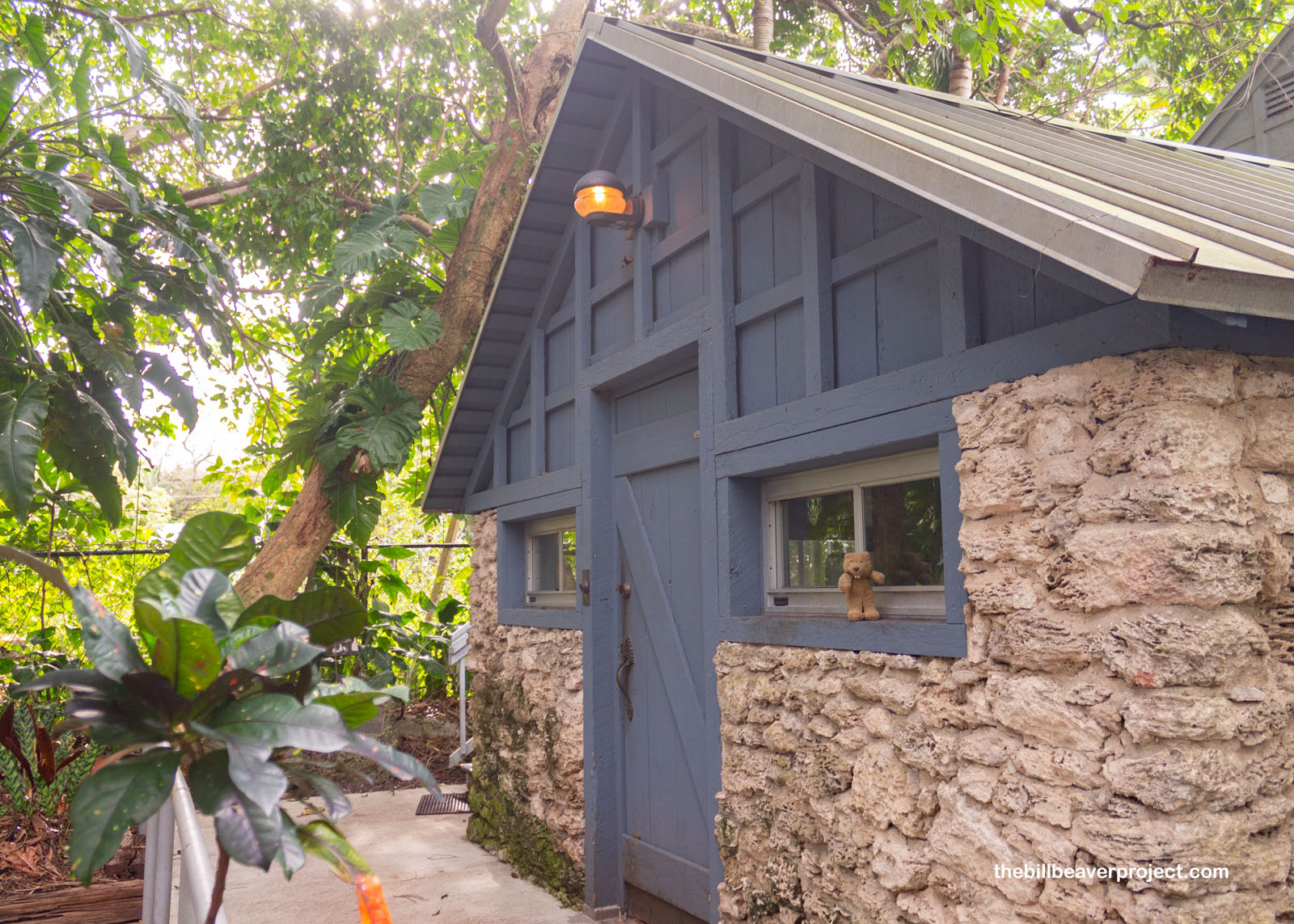 |
After Dr. Simmons died in 1909, the property eventually passed into the hands of hostirculturist, Dr. David Fairchild, and his wife, Marian (daughter of Alexander Graham Bell)! Calling it “Kampong” after enclosed villages they’d seen in Indonesia, they blasted away at the limestone, part of the unique Miami Rock Ridge, and filled it with mulch to create a staging area for experimenting with exotic plants. Dr. Fairchild added a lab to the Simmons Home, and from here, he studied plants, like soybeans, mangos, and bamboo, which can now be found, for better or for worse, across the country!
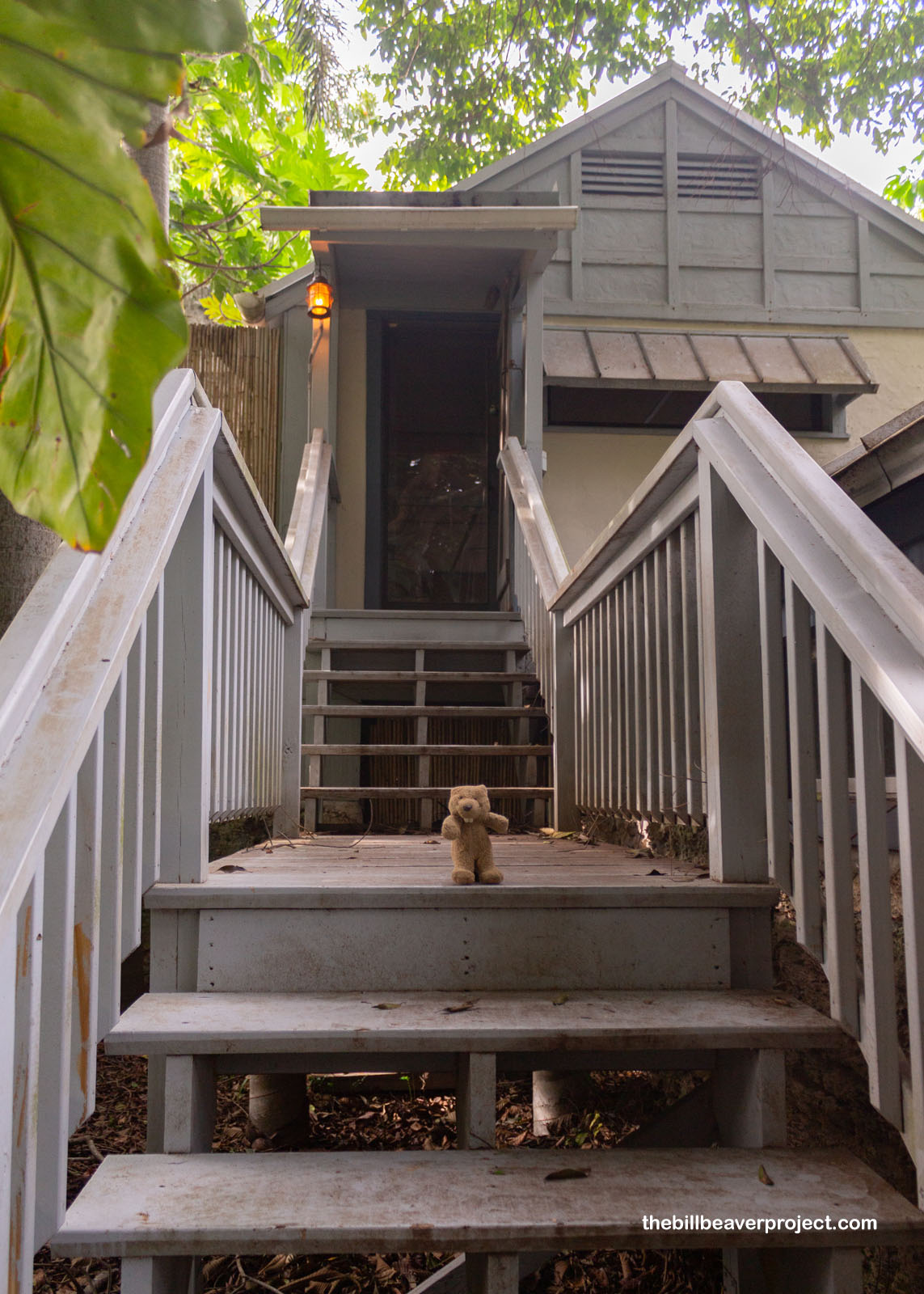 |
Their home, designed by Edward Clarence Dean and Max Strang in Spanish-Revival style in 1928, is still a private residence today! For that reason, the Kampong requires reservations to enter, and there are plenty of restricted areas. I didn’t mind, because it was a perfect day for wandering the grounds of the estate!
 |
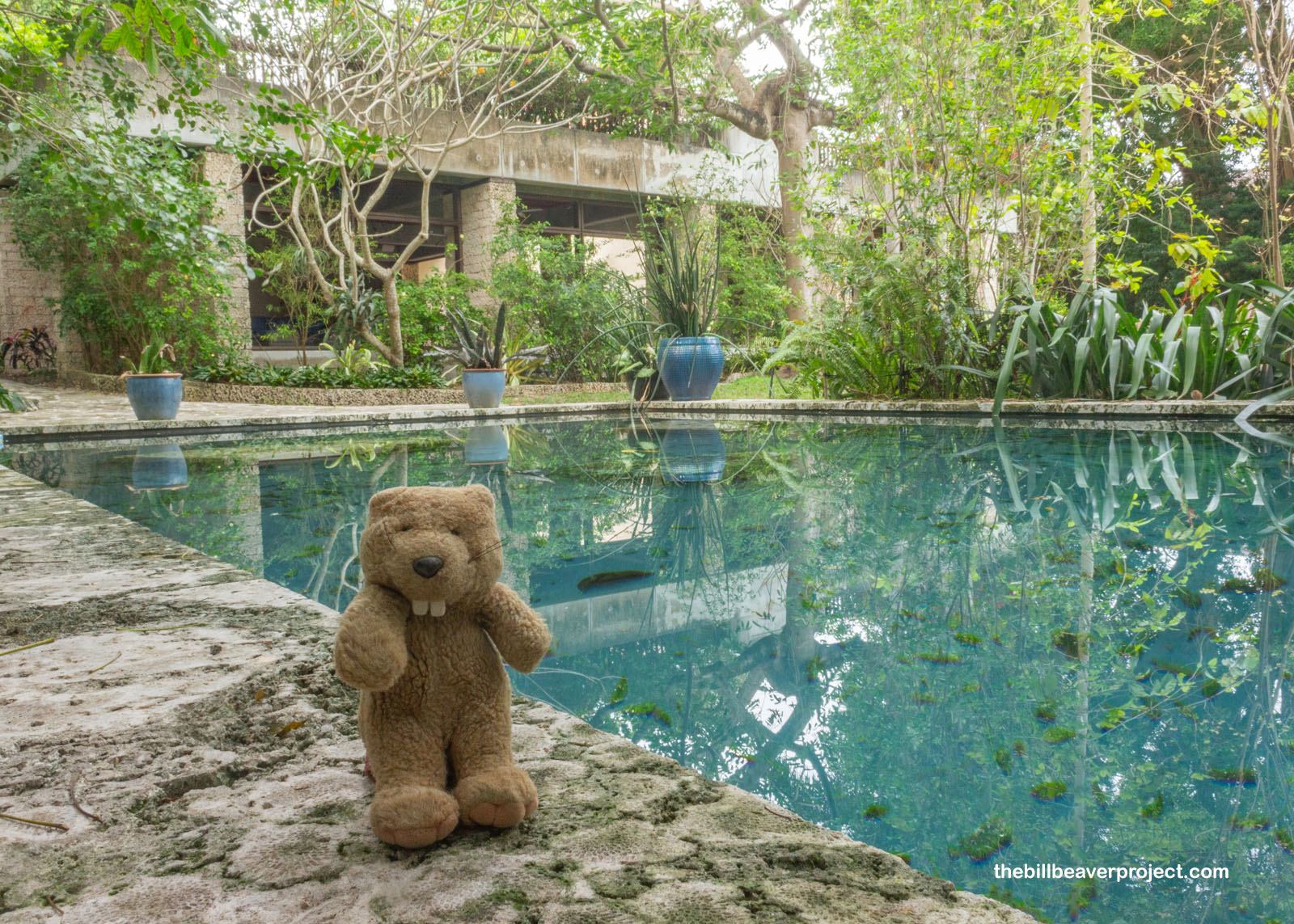 |
And there was a lot to see, nine acres worth, stretching all the way through the natural mangrove area, where crocodile warnings kept folks away from the water’s edge, to the coast, lined with seagrapes! These plants are actually native to Florida and apparently have scrumptious fruit, but not until late summer. Dang it!
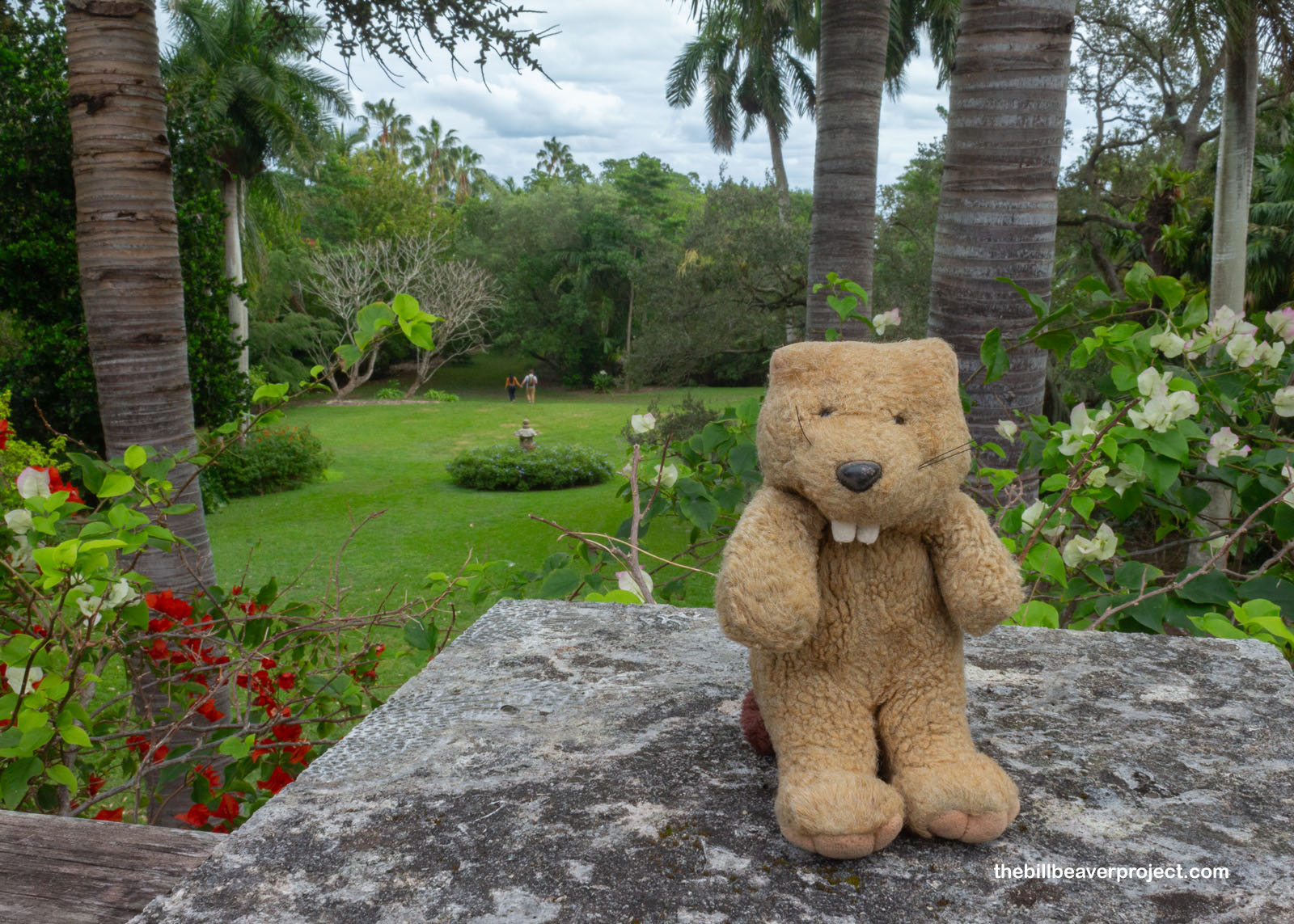 |
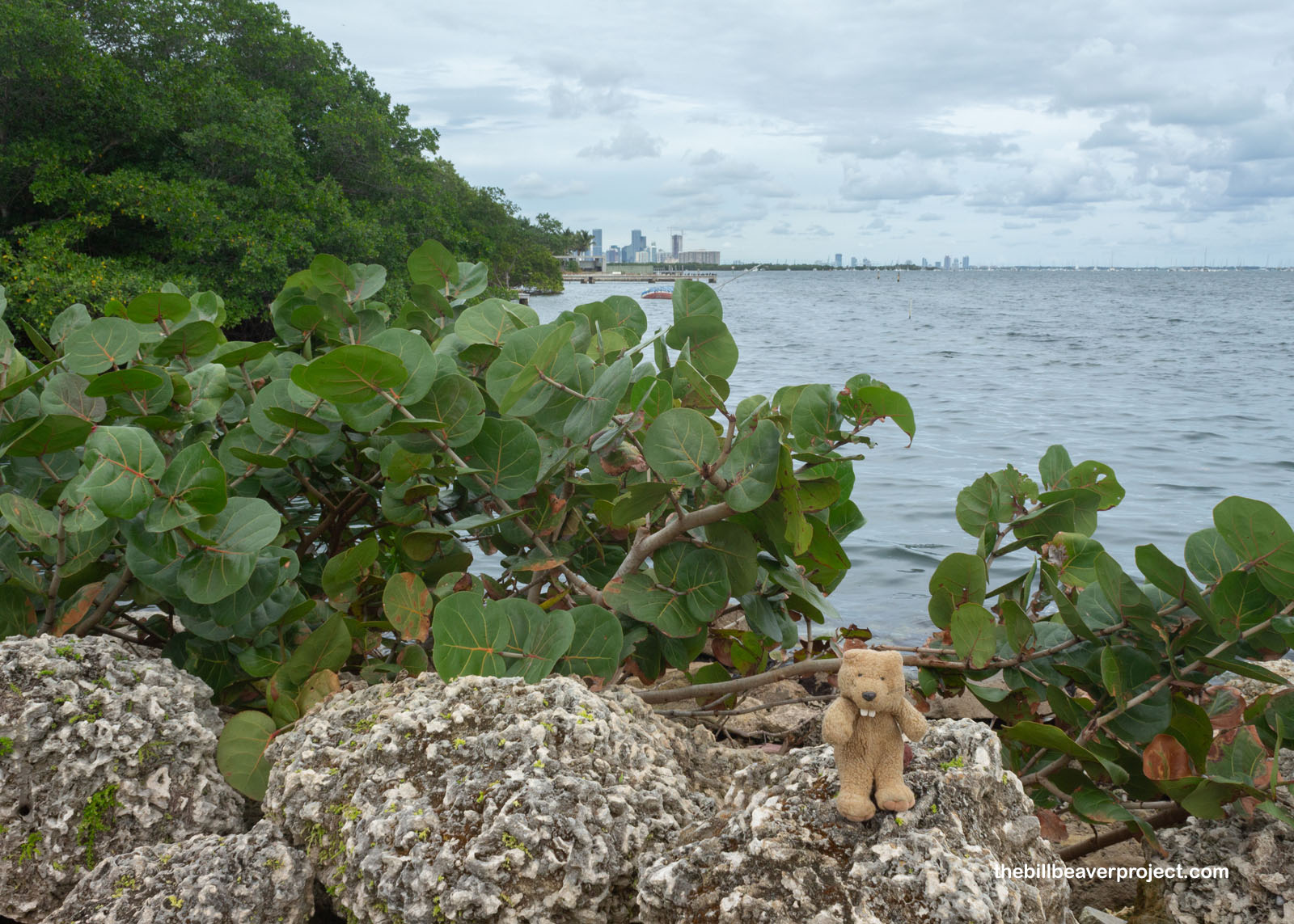 |
Still standing from the Fairchilds’ residence here was the “Sun Still,” one of Mr. Bell’s inventions! This contraption uses the heat of the sun to evaporate water from one end, which condenses on the glass and slides down its 30-degree angle to a channel at the base, leaving a nice supply of freshly distilled water!
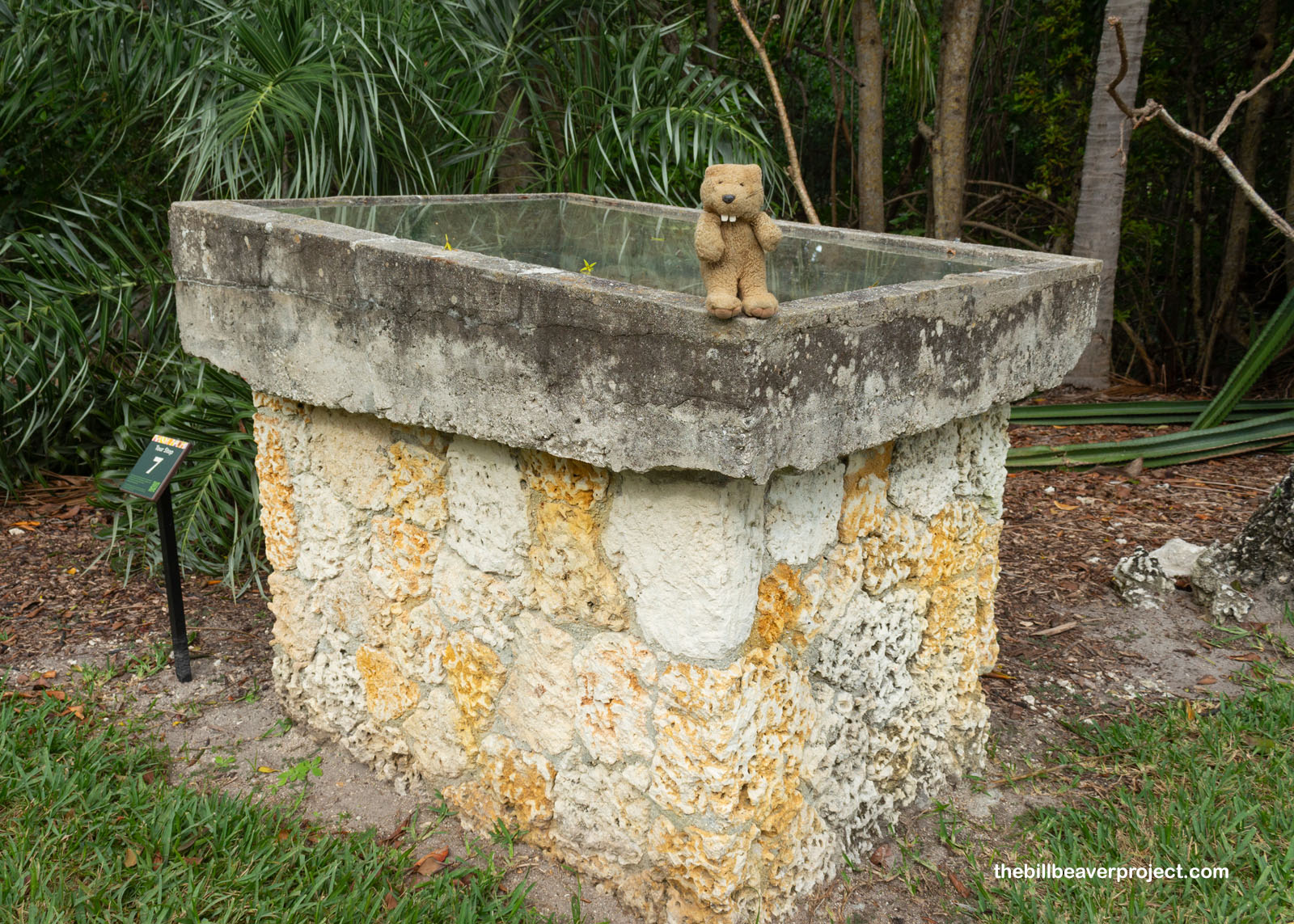 |
Alright, I came here to see neat plants, and neat plants I planned to see! First up, there was fruit, even in December! This tree was a sapodilla (Manilkara zapota)! Not quite like the sapote I saw yesterday at Robert Is Here, the sapodilla not only produces tasty fruit but also a resin from its bark called chicle, the base for chewing gum!
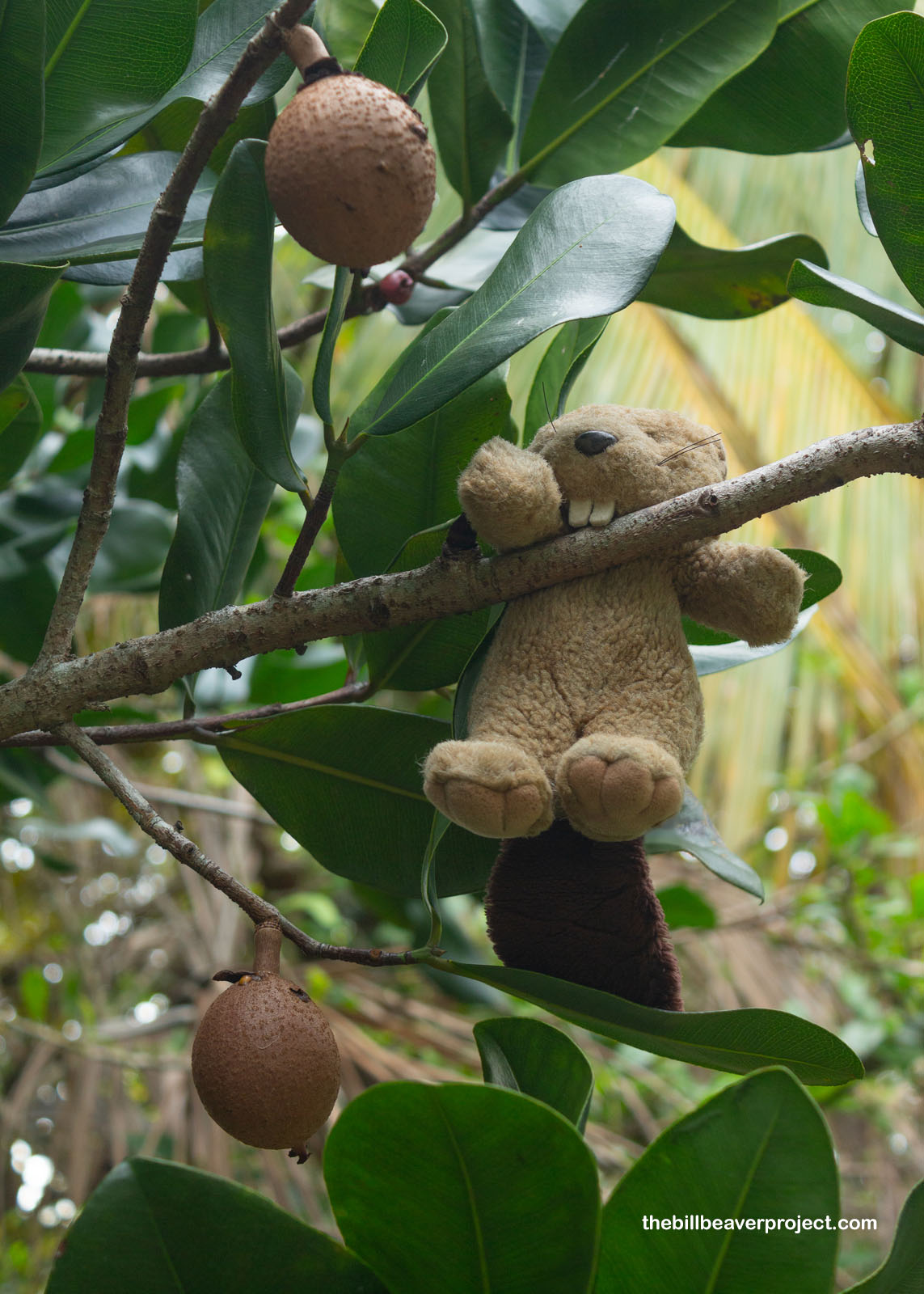 |
There was a section dedicated entirely to different kinds of gingers! I was so used to seeing the same old kind of ginger in stores that I was astonished to learn there are 1,600 known species of gingers, with at least 8 being good for cooking! Most, like this Alpinia purpurata, are planted for decoration, but some even secrete a goo which you can use as shampoo!
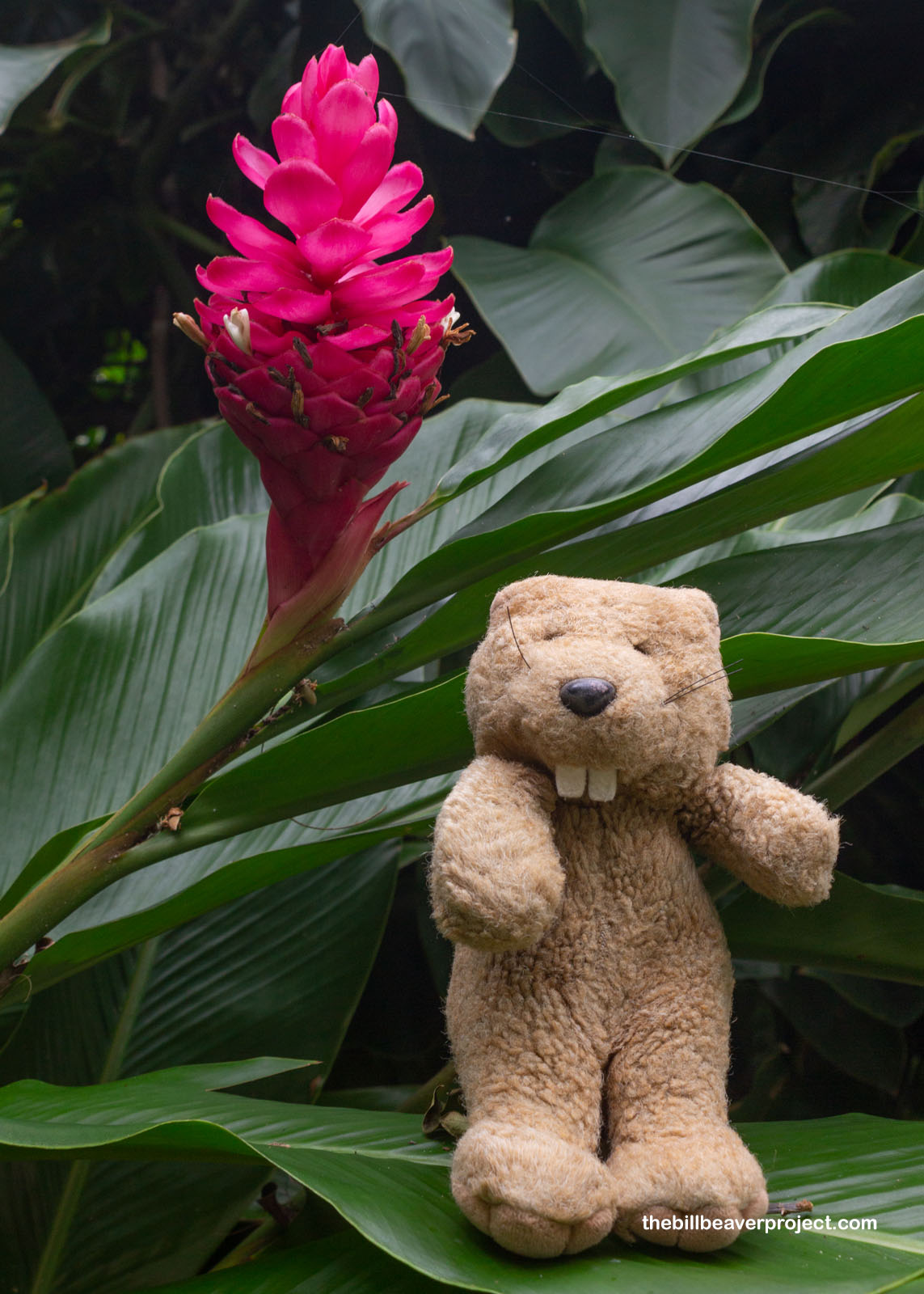 |
Where I live in Southern California, avocados are practically a cult! Here, over 30 cult-ivars got their start on US soil after Mr. Fairchild first tasted them in Chile, where they’re called paltas! Fans of avocado toast, BLAT sandwiches, and guacamole can thank Mr. Fairchild for popularizing the delectable fruit on this side of the Border! At the Kampong, there are over 23 varieties of avocado being grown!
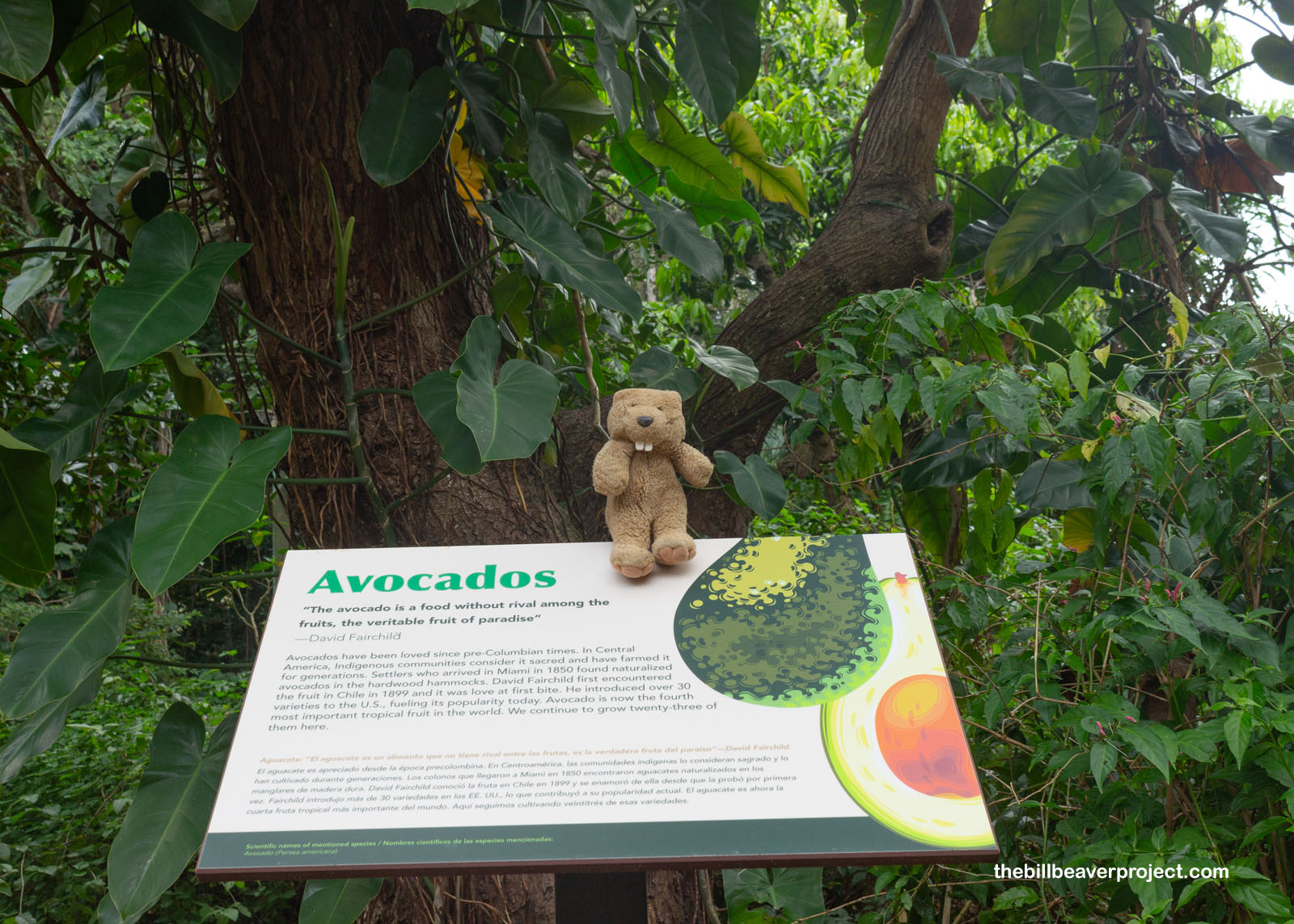 |
Not far away, I encountered a tree with red, peeling bark. Was it a gumbo-limbo tree like I’d seen yesterday? Almost! This was frankincense (Boswellia sacra), the famous incense from the Arabian Sea coast! This tree’s resin is dried and used for its aroma, purifying properties, and even medicine!
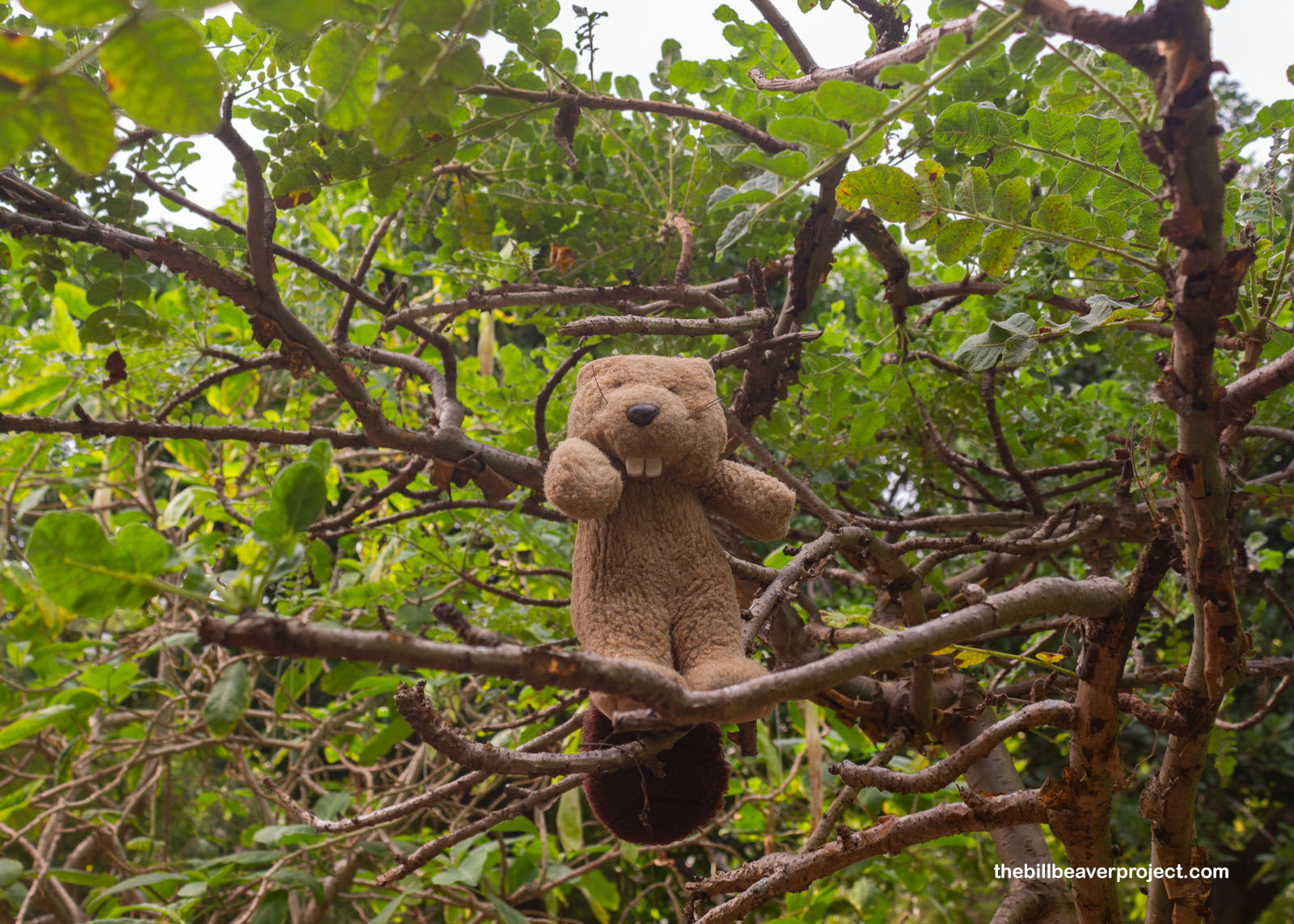 |
And to conclude my whirlwind tour of the amazing plants on display at the Kampong, and my adventuring for 2023, I beheld the “Tree of life” itself, the baobab! Able to live up to 2,000 years, baobabs aren’t just destroyers of miniature planets; in fact, they give water to elephants, nesting places to birds, and nectar to bats! Humans have long used baobabs for food, dyes, fibers, and plenty more, making this a real Giving Tree! Brought here as a seed from Tanzania in 1928, this one has fallen over so many times, starting with Hurricane Cleo in 1964, that after a while, it was left lying in place. True to its nickname, the baobab continued to live and grow right where it fell, even though it’s hollow! There’s a lot to be learned from this tree!
 |
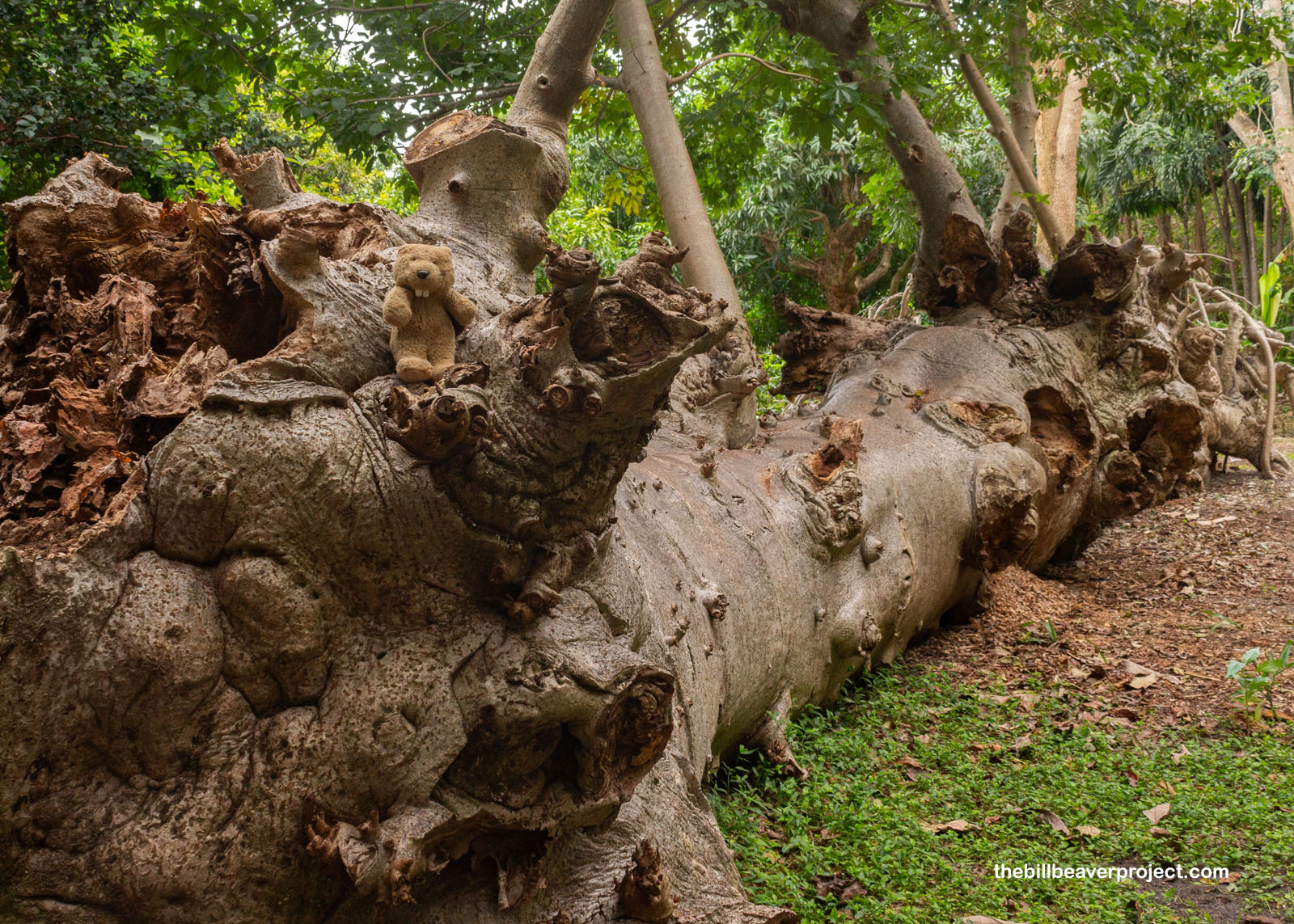 |
After wandering the Kampong from top to bottom, left to right, the time had come to head for the airport. In just over a week, it will be a new year, so I’ll need to get to work on a new hat. I’ve covered so many tropical places in 2023 that maybe it’s time to seek out some cool weather wear. I’ll let you know when my adventures resume in January 2024!
Flowin’ outta Florida!

 Previous Day |
Total Ground Covered: 623.6 mi (1,002.5 km) |
 More 2023 Adventures |
